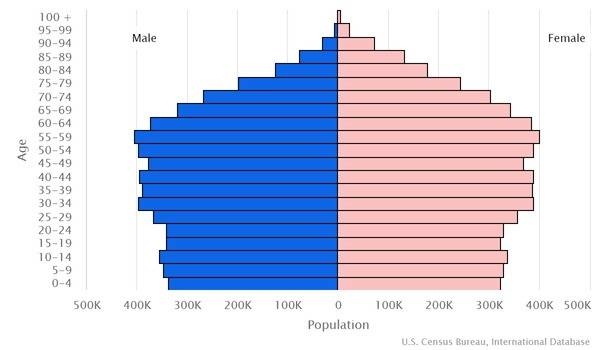Country Summary




Introduction
Background
Belgium became independent from the Netherlands in 1830. The country prospered in the past half century as a modern, technologically advanced European state and member of NATO and the EU. The capital city of Brussels is home to numerous international organizations including the EU and NATO.
Geography
Area
total: 30,528 sq km
land: 30,278 sq km
water: 250 sq km
Climate
temperate; mild winters, cool summers; rainy, humid, cloudy
Natural resources
construction materials, silica sand, carbonates, arable land
People and Society
Population
11,847,338 (2022 est.)
Ethnic groups
Belgian 75.2%, Italian 4.1%, Moroccan 3.7%, French 2.4%, Turkish 2%, Dutch 2%, other 10.6% (2012 est.)
Languages
Dutch (official) 60%, French (official) 40%, German (official) less than 1%
Religions
Roman Catholic 57.1%, Protestant 2.3%, other Christian, 2.8%, Muslim 6.8%, other 1.7%, atheist 9.1%, nonbeliever/agnostic 20.2% (2018 est.)
Population growth rate
0.57% (2022 est.)
Government
Government type
federal parliamentary democracy under a constitutional monarchy
Capital
name: Brussels
Executive branch
chief of state: King PHILIPPE (since 21 July 2013); Heir Apparent Princess ELISABETH (daughter of the monarch, born 25 October 2001)
head of government: Prime Minister Alexander DE CROO (since 1 October 2020); Deputy Prime Ministers Vincent Van QUICKENBORNE (since 1 October 2020), Sophie WILMES (since 1 October 2020), Vincent VAN PETEGHEM (since 1 October 2020), Frank VANDENBROUCKE (since 1 October 2020), Pierre-Yves DERMAGNE (since 1 October 2020), Petra DE SUTTER (since 1 October 2020), Georges GILKINET (since 1 October 2020)
Legislative branch
description: bicameral Parliament consists of:
Senate or Senaat (in Dutch), Senat (in French) (60 seats; 50 members indirectly elected by the community and regional parliaments based on their election results, and 10 elected by the 50 other senators; members serve 5-year terms)
Chamber of Representatives or Kamer van Volksvertegenwoordigers (in Dutch), Chambre des Representants (in French) (150 seats; members directly elected in multi-seat constituencies by proportional representation vote; members serve 5-year terms)
Economy
Economic overview
high income economy with strong but moderate growth; high public debt; aging labor force; low labor force participation of low-skilled, migrant, and older workers; strong welfare system; high congestion; complex business permitting and judicial systems
Real GDP (purchasing power parity)
$557.11 billion (2020 est.)
Real GDP per capita
$48,200 (2020 est.)
Agricultural products
sugar beets, milk, potatoes, wheat, pork, lettuce, poultry, maize, barley, pears
Industries
engineering and metal products, motor vehicle assembly, transportation equipment, scientific instruments, processed food and beverages, chemicals, pharmaceuticals, base metals, textiles, glass, petroleum
Exports
$414.79 billion (2020 est.)
Exports - partners
Germany 17%, France 14%, Netherlands 13%, United Kingdom 8%, United States 6%, Italy 5% (2019)
Exports - commodities
cars and vehicle parts, refined petroleum, packaged medicines, medical cultures/vaccines, diamonds, natural gas (2019)
Imports
$412.85 billion (2020 est.)
Imports - partners
Netherlands 16%, Germany 13%, France 10%, United States 8%, Ireland 5%, China 5% (2019)
Imports - commodities
cars, refined petroleum, packaged medicines, medical cultures/vaccines, diamonds, natural gas (2019)
Exchange rates
euros (EUR) per US dollar -
Page last updated: Wednesday, November 16, 2022
